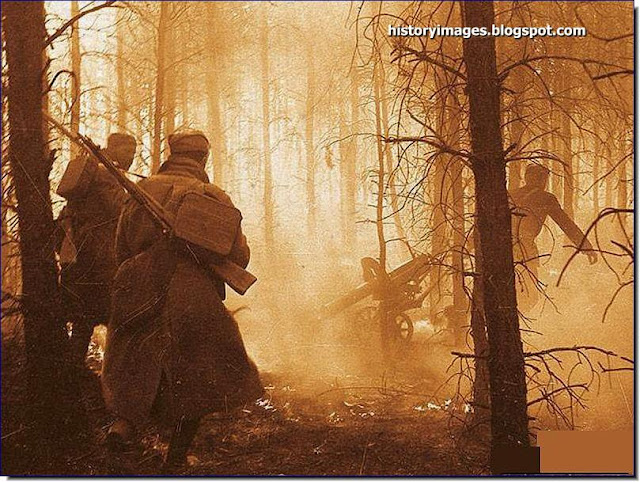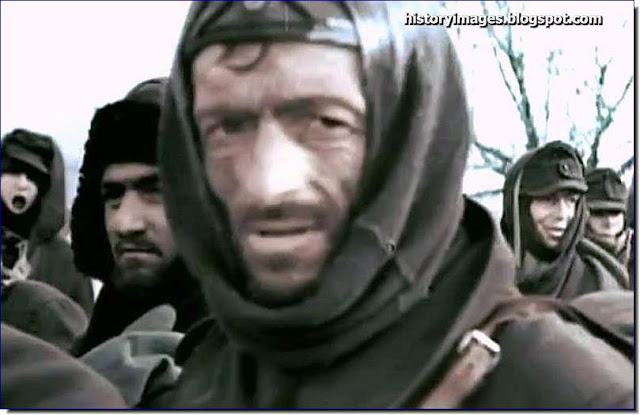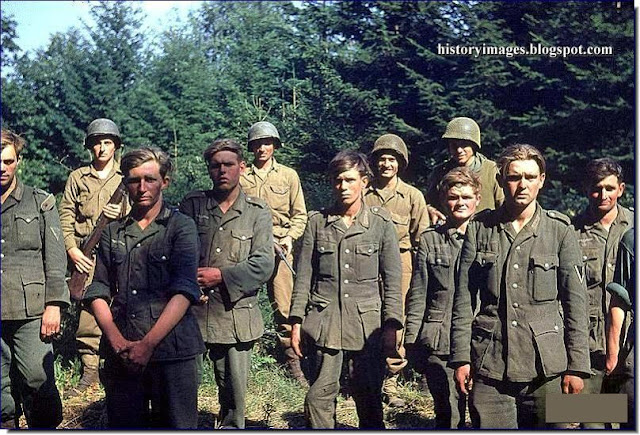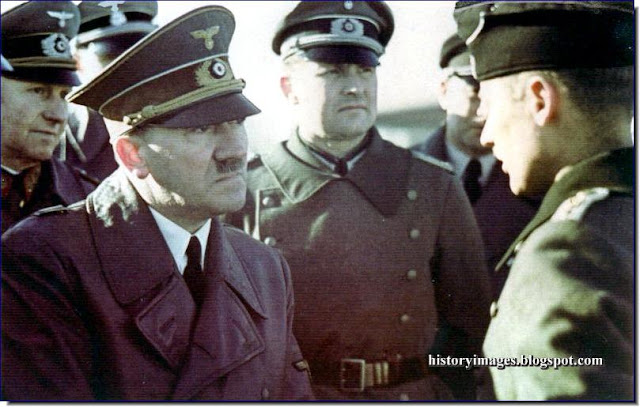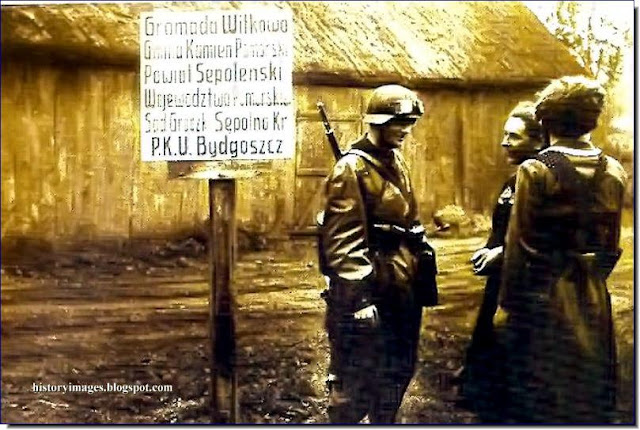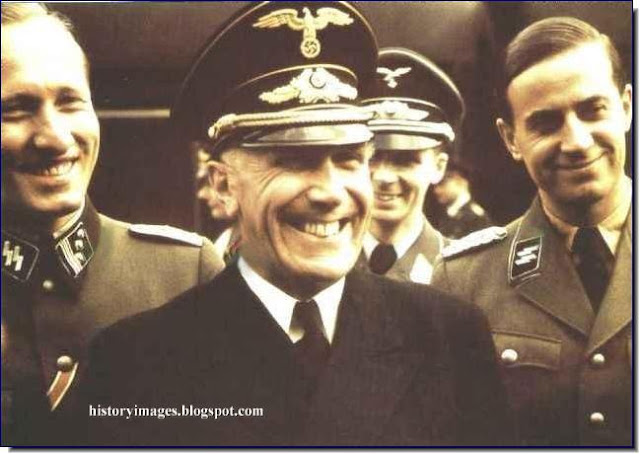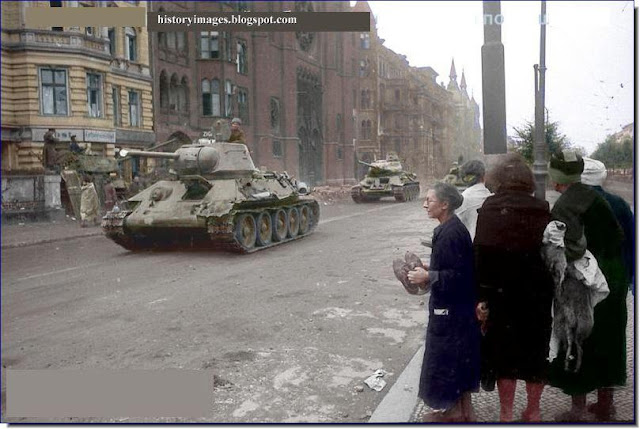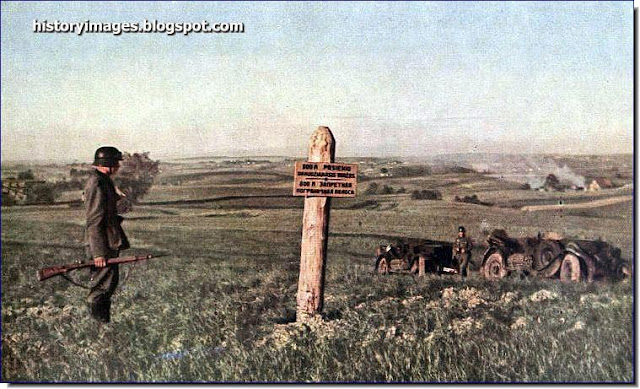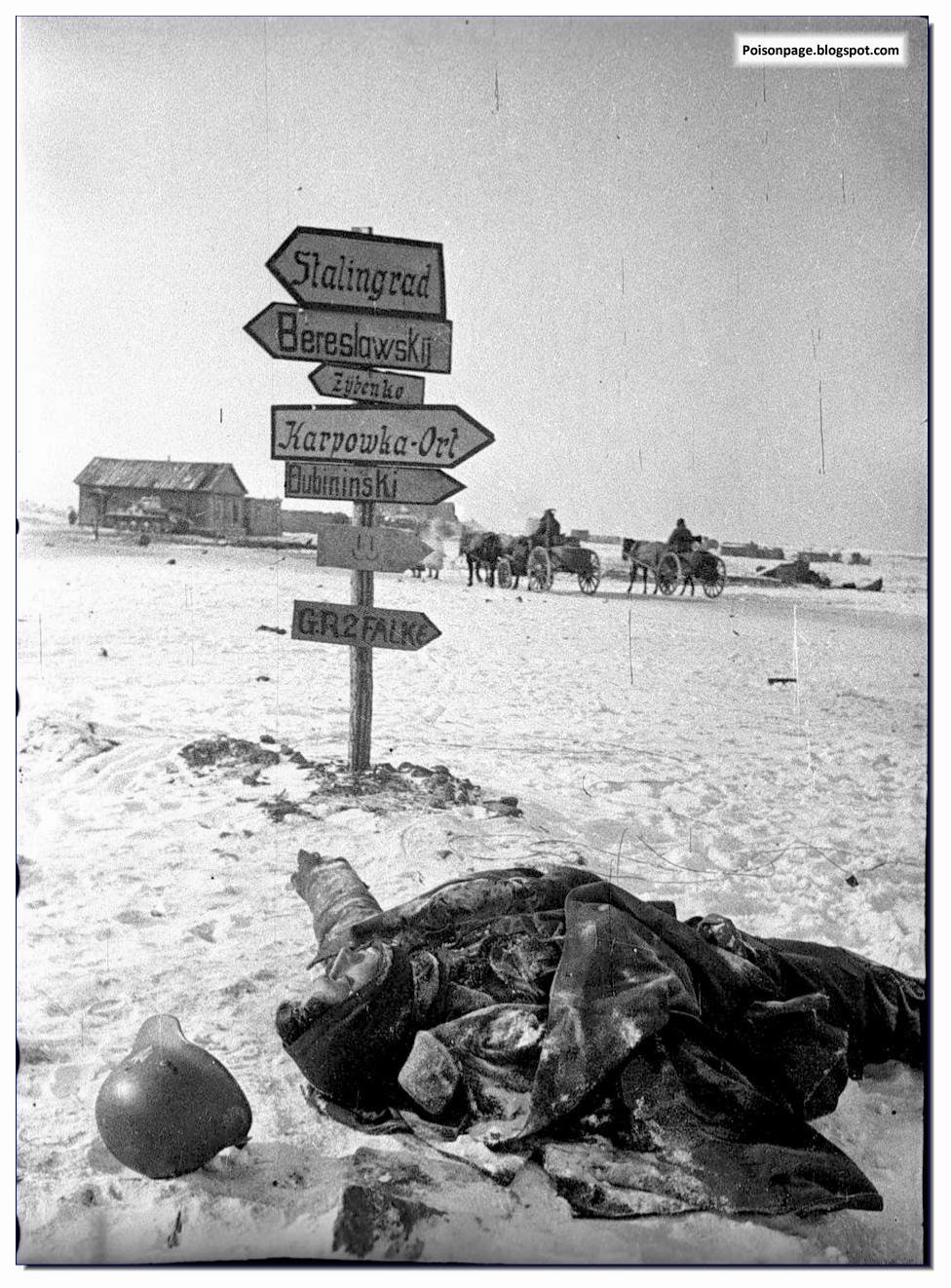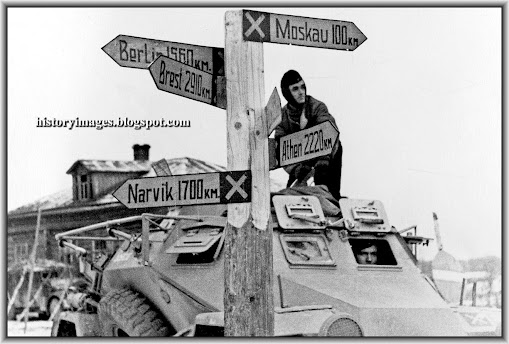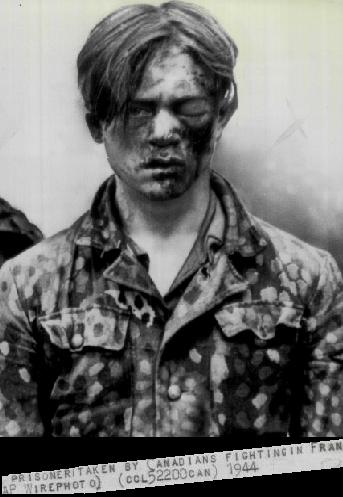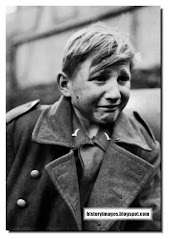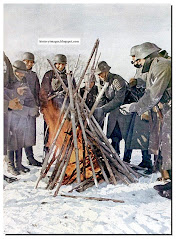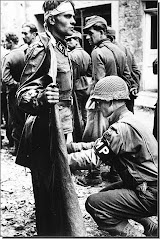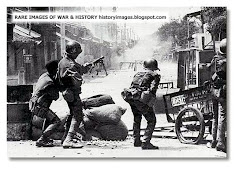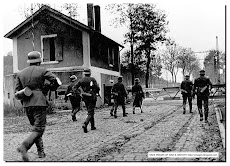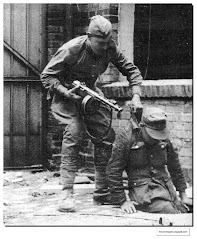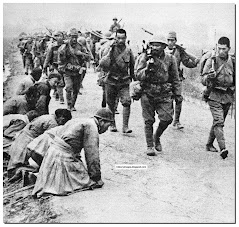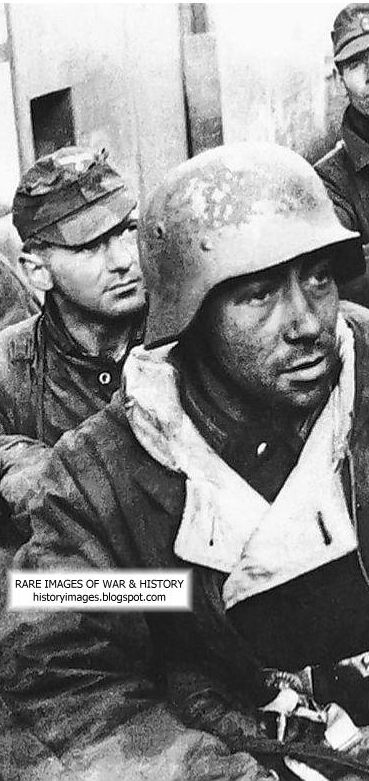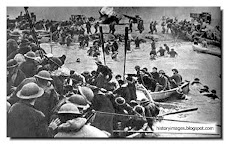1941. Cocky German soldiers in Russia as the country burns.
A cigarette break for German soldiers in the endless expanse of Russia, which eventually defeated the Germans.
The nemesis of the once invincible German war machine: Russian soldiers. Here they move ghost-like in the woods into an attack.
A face that the world believed would never be seen. That of a beaten, starving German soldier. Stalingrad.
Stalingrad again.
Grateful to an ally. Marshals of the Soviet Union Georgy Zhukov (1896-1974) and Konstantin Rokossovsky (1896-1968) talking to Bernard Montgomery (1887-1976) near the Brandenburg Gate in Berlin. The Soviet marshals were awarded the British Order of the Bath (the fourth largest award in the UK) of different classes: GK Zhukov - Honorary Knight Grand Cross of the Order of the Bath, and KK Rokossovsky - Honorary Knight Commander Order of the Bath.
Young German soldiers taken prisoner by the Americans in the area of Saint-Denis-le-Gast (Saint-Denis-le-Gast).
Adolf Hitler hears the report from a soldier. Behind the back of the Fuehrer, on the left - Gen. Alfred Jodl, on the right - Hitler's adjutant, Major Gerhard Engel. Presumably in 1939-1940.
The American battleship USS Idaho fires on Japanese fortifications on Okinawa.
1939. Occupied Poland. A German soldier chats up Polish women.
Destroyed German Panzer 4 tanks at Lanuvio, Italy
Russian soldiers with KV 1S tanks
THE RUSSIAN TANK: KV 1S
Russian soldiers with T-34/76F tanks
A few bad men. Fritz Darges, Franz von Papen, Nicolaus von Below and Dr Karl Brandt
WHO WERE THESE GUYS?
1939. Occupied Poland. A German soldier chats up Polish women.
Destroyed German Panzer 4 tanks at Lanuvio, Italy
Russian soldiers with KV 1S tanks
THE RUSSIAN TANK: KV 1S
The Kliment Voroshilov (KV) tanks were a series of Soviet heavy tanks, named after the Soviet defense commissar and politician Kliment Voroshilov. The KV series were known for their extremely heavy armour protection during the early war, especially during the first year of the invasion of the Soviet Union in World War II. Almost completely immune to the 3.7 cm KwK 36 and howitzer-like, short barreled 7.5 cm KwK 37 guns mounted respectively on the early Panzer III and Panzer IV tanks, until better guns were developed often the only way to defeat a KV was a point-blank shot to the rear. Prior to the invasion, about 500 of the over 22,000 tanks in Soviet service at the time were of the KV-1 type. When the KV-1 appeared, it outclassed the French Char B1, the only heavy tank used in the world at that time. Yet in the end it turned out that there was little sense in producing the expensive KV tanks, as the T-34 medium tank performed better (or at least equally) in all practical respects. Later in the war, the KV series became a base of development of the Iosif Stalin tanks.
KV-1S was a lighter variant of late 1942 with higher speed, but thinner armour. A new, smaller, cast turret and redesigned rear hull were used. 1370 of them were built.
Russian soldiers with T-34/76F tanks
The T-34 Medium Tank is by far the most famous Soviet weapon of the Second World War, and has become a symbol of the Red Army’s desperate struggle against the Germans. In 1941 it was the most advanced tank then in mass production, and nearly 1,000 were present on the front line at the start of Operation Barbarossa, but like every other Soviet tank the T-34 was swept aside in the first phase of German victories. After this inauspicious start, the T-34 began to appear in ever larger numbers on the Eastern Front, and during the crucial battles around Stalingrad and at Kursk was almost the only tank in use with the Red Army. The "F" variant was developed in 1943.
http://www.historyofwar.org/articles/weapons_t-34_develop_combat.html
A few bad men. Fritz Darges, Franz von Papen, Nicolaus von Below and Dr Karl Brandt
WHO WERE THESE GUYS?
Fritz Darges (8 February 1913 – 25 October 2009) was an Obersturmbannführer (Lieutenant Colonel) in the Waffen SS during World War II who was awarded the Knight's Cross of the Iron Cross. He was Hitler's adjutant for a year till July 1944. On 18 July 1944, during a strategy conference in the Wolfsschanze, a fly began buzzing around the room, allegedly landing on Hitler's shoulder and on the surface of a map several times. Irritated, Hitler ordered Darges to dispatch the nuisance. Darges suggested that, as it was an airborne pest, the job should go to the Luftwaffe adjutant, Nicolaus von Below. Enraged, Hitler dismissed Darges on the spot and had him banished to the Eastern Front. Another version of this story claims Darges was merely snickering as Hitler looked up from the map.
Franz von Papen belonged to the group of close advisers to President Paul von Hindenburg in the late Weimar Republic. It was largely Papen, believing that Hitler could be controlled once he was in the government, who persuaded Hindenburg to appoint Hitler as Chancellor in a cabinet not under Nazi Party domination. However, Papen and his allies were quickly marginalized by Hitler and he left the government after the Night of the Long Knives, during which some of his confidants were killed by the Nazis.
Nicolaus von Below (20 September 1907 – 24 July 1983) was an officer in the German Air Force (Luftwaffe) before and during World War II. He was the Luftwaffe adjutant to Hitler from 1937-45. After the war, Below wrote a book containing the memoirs of his service during World War II entitled At Hitler's Side (2001). He died in Detmold, Germany, in 1983.
Karl Brandt (January 8, 1904 – June 2, 1948) was a German Nazi war criminal. He rose to the rank of SS-Gruppenführer in the Allgemeine-SS and SS-Brigadeführer in the Waffen-SS. Among other positions, Brandt headed the administration of the Nazi euthanasia program from 1939 onwards and was selected as Adolf Hitler's personal physician in August 1934. In 1942, he became Reich Commissioner for Health and Sanitation. He was involved in criminal human experimentation, along with his deputy Werner Heyde and others. After World War II, Brandt was convicted of crimes against humanity. He was hanged on June 2, 1948.
Franz von Papen belonged to the group of close advisers to President Paul von Hindenburg in the late Weimar Republic. It was largely Papen, believing that Hitler could be controlled once he was in the government, who persuaded Hindenburg to appoint Hitler as Chancellor in a cabinet not under Nazi Party domination. However, Papen and his allies were quickly marginalized by Hitler and he left the government after the Night of the Long Knives, during which some of his confidants were killed by the Nazis.
Nicolaus von Below (20 September 1907 – 24 July 1983) was an officer in the German Air Force (Luftwaffe) before and during World War II. He was the Luftwaffe adjutant to Hitler from 1937-45. After the war, Below wrote a book containing the memoirs of his service during World War II entitled At Hitler's Side (2001). He died in Detmold, Germany, in 1983.
Karl Brandt (January 8, 1904 – June 2, 1948) was a German Nazi war criminal. He rose to the rank of SS-Gruppenführer in the Allgemeine-SS and SS-Brigadeführer in the Waffen-SS. Among other positions, Brandt headed the administration of the Nazi euthanasia program from 1939 onwards and was selected as Adolf Hitler's personal physician in August 1934. In 1942, he became Reich Commissioner for Health and Sanitation. He was involved in criminal human experimentation, along with his deputy Werner Heyde and others. After World War II, Brandt was convicted of crimes against humanity. He was hanged on June 2, 1948.
Old German women watch haplessly as Russian tanks roll on the streets of Berlin. May 1945
Paris. 1942. German soldiers talk to a Jew. Jews were supposed to wear a yellow star.
May 9, 1945. Russian commanders address their troops at the Brandenburg Gate, Berlin.
British POW at Dunkirk. Western soldiers were treated decently by the Germans. It was the "Untermenschen" Russian soldiers who got the rough treatment.
The Balkans in flames. German tanks in the Serbian city of Nis, Spring 1941
German bombers drop a bomb somewhere in western Europe
June 22, 1941
Eva Braun. Almost as good as Marilyn Monroe?
Hitler takes a salute from his soldiers in occupied Poland. 1939.
The Balkans in flames. German tanks in the Serbian city of Nis, Spring 1941
German bombers drop a bomb somewhere in western Europe
June 22, 1941
Eva Braun. Almost as good as Marilyn Monroe?
Hitler takes a salute from his soldiers in occupied Poland. 1939.


